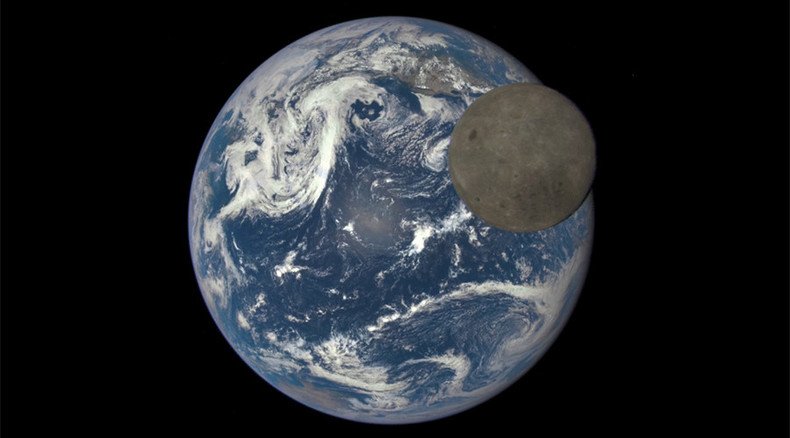EPIC video of sunlit ‘dark side’ of moon crossing over Earth revealed by NASA

NASA has released spectacular footage of the “dark side” of the moon – fully illuminated – as the Earth’s natural satellite was moving across the sunlit side of our planet. The unique shots were captured by the Deep Space Climate Observatory.
Taken by the Earth Polychromatic Imaging Camera (EPIC), the images show a unique view of our planet and the moon from one million miles away. The capture of this rare spectacle was made possible due to the orbiting trajectory of the DSCOVR satellite that is positioned between the Sun and the Earth, giving it the capability to see the far side of the moon.
“It is surprising how much brighter Earth is than the moon,” said Adam Szabo, DSCOVR project scientist at NASA’s Goddard Space Flight Center in Greenbelt, Maryland. “Our planet is a truly brilliant object in dark space compared to the lunar surface.”
The series of images taken on July 16 were compiled into GIF animation that depicts the moon flying over the North America and the Pacific Ocean. The images taken from the satellite’s point of view also clearly show the tilt of the Earth, with the North Pole located in the upper left corner.
DSCOVR is meant to serve as an early warning system when harmful solar activity is heading our way. From its position some 1 million miles away, DSCOVR should be able to issue a warning around 15 to 60 minutes before a geomagnetic storm reaches our Planet.
READ MORE: NASA ‘forced’ to extend $490mn contract with Russia for manned space flights
“EPIC maintains a constant view of the fully illuminated Earth as it rotates, providing scientific observations of ozone, vegetation, cloud height and aerosols in the atmosphere,” NASA said in the press release.
DSCOVR that was launched in February this year is also designed to gather a range of measurements from ozone and aerosol amounts to changes in Earth’s radiation. But one of the satellite's strongest weapons is the EPIC which takes full-color snaps in sets of 10 images using different narrowband filters – from ultraviolet to near infrared.
Pretty incredible time lapse of the dark side of the moon passing Earth from @NASA. American ingenuity at work! pic.twitter.com/JKep9bcxGQ
— President Obama (@POTUS) August 5, 2015“Once EPIC begins regular observations next month, the camera will provide a series of Earth images allowing study of daily variations over the entire globe. About twice a year the camera will capture the moon and Earth together as the orbit of DSCOVR crosses the orbital plane of the moon,” NASA says.
First images of the “dark side” of the moon, never seen from Earth, were taken by USSR’s Luna 3 spacecraft in 1959. Over the decades of scientific research based on images produced by NASA’s programs, scientists were able to determine that the far side lacks the large, dark, basaltic plains that are present on the side facing the Earth.












